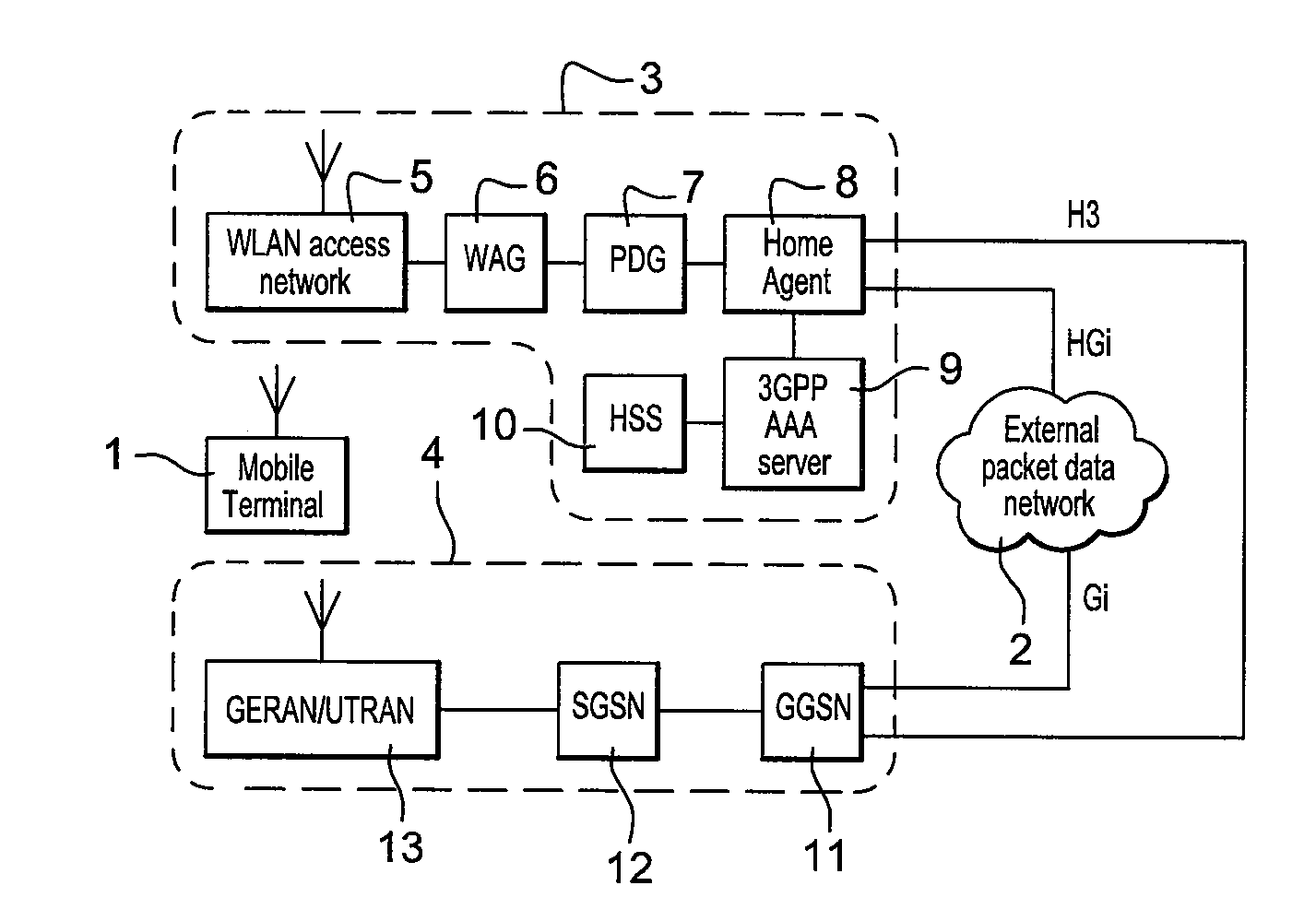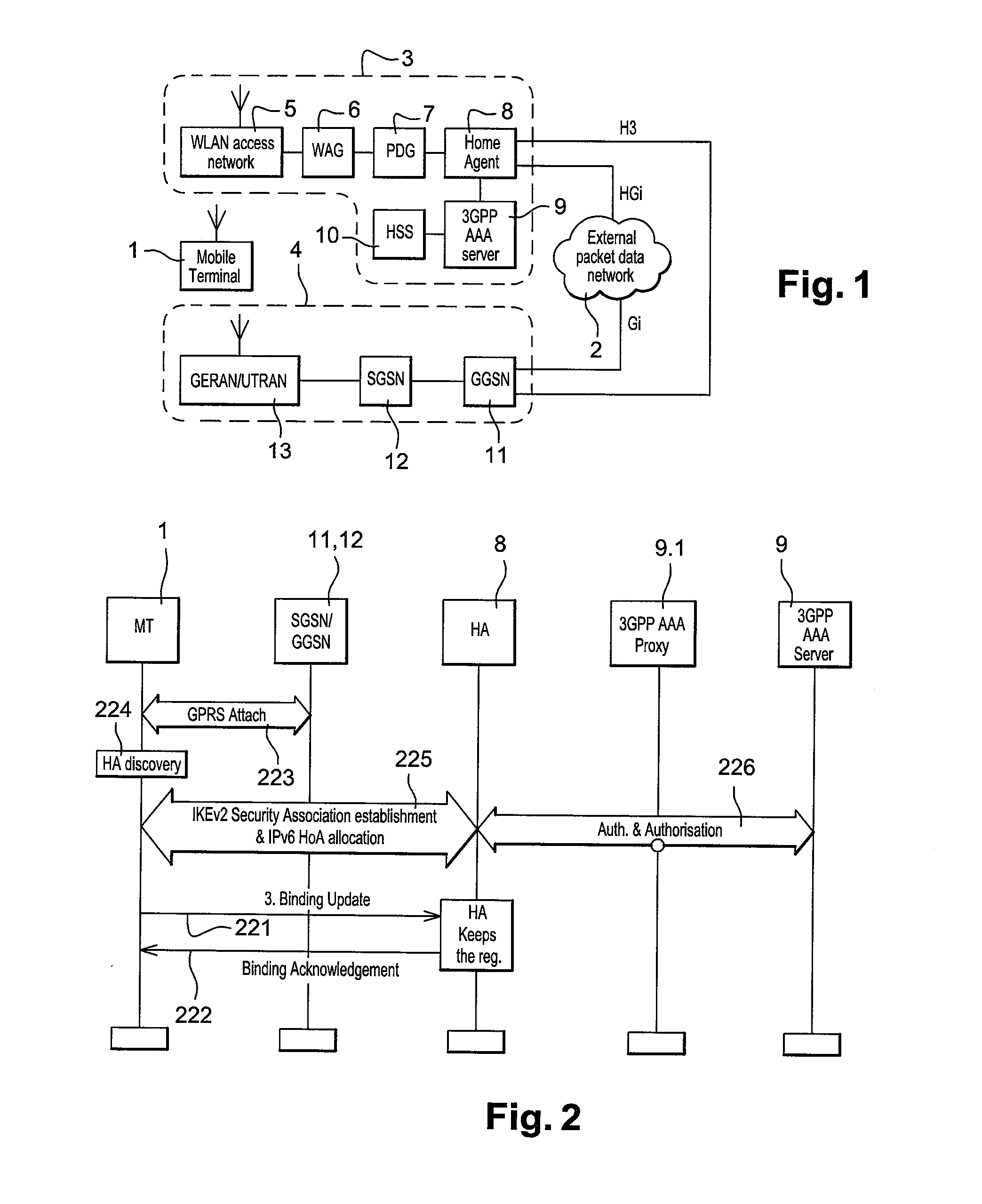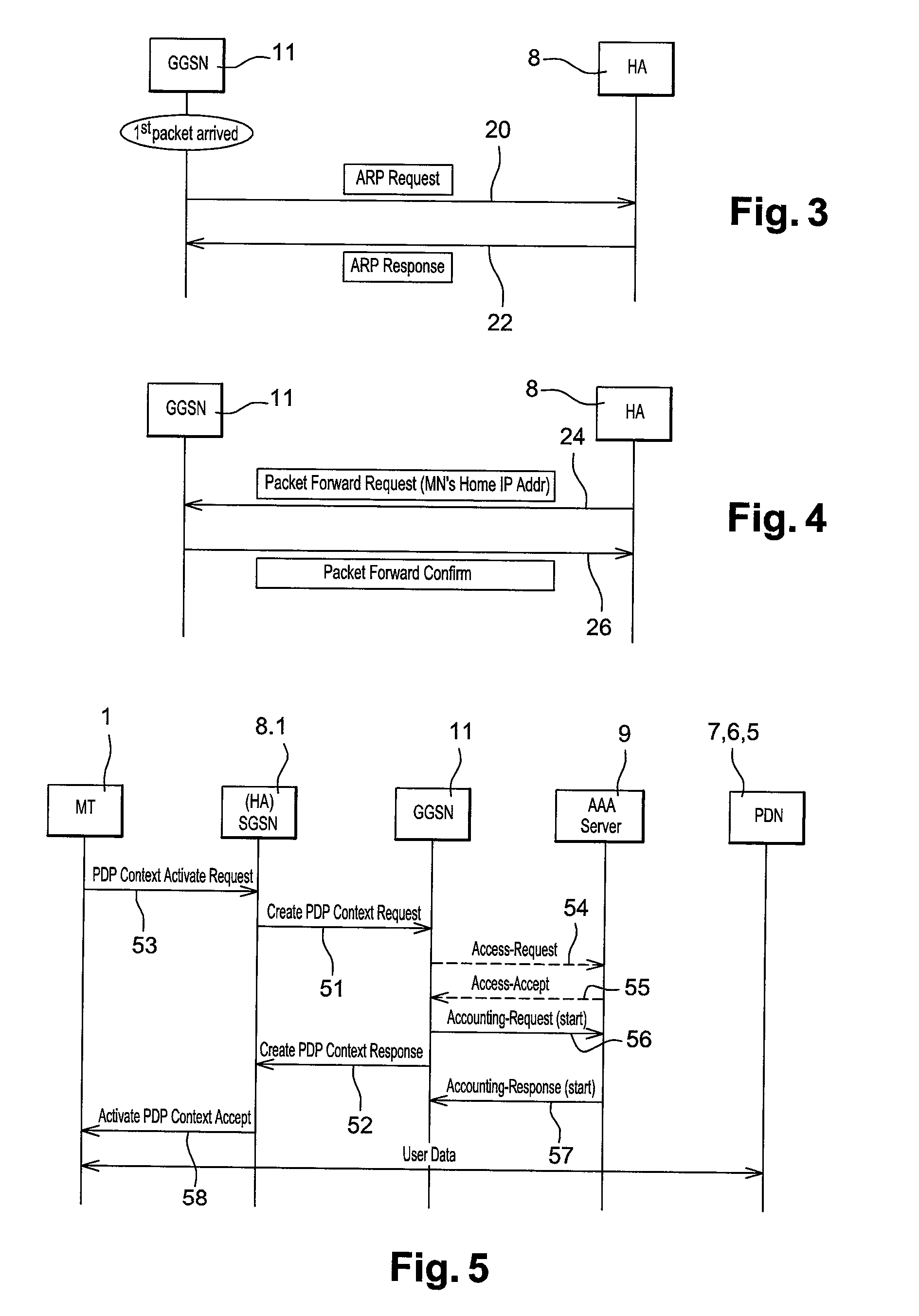Telecommunications system and method
a technology of telecommunications system and mobile terminal, applied in the field of mobile telecommunications system, can solve the problems of reducing the bandwidth available for applications running on the mobile terminal to transmit and receive data, increasing the signalling overhead, and gprs link, so as to facilitate packet forwarding, save effort and inconvenience, and reduce the likelihood of encountering compatibility issues
- Summary
- Abstract
- Description
- Claims
- Application Information
AI Technical Summary
Benefits of technology
Problems solved by technology
Method used
Image
Examples
Embodiment Construction
[0025]FIG. 1 shows a telecommunications system arranged in accordance with an embodiment of the present invention. The system includes a mobile terminal 1 which includes a mobile IP compatible protocol stack such as a DSMIPv6 protocol stack. The mobile terminal 1 can communicate packet data to and from the I-WLAN network 3 and GPRS network 4. The I-WLAN network 3 includes a WLAN access network for establishing an I-WLAN link with the mobile terminal 1, a wireless access gateway 6 and a packet data gateway 7. The packet data gateway 7 is connected to a home agent 8 which also includes a connection to a 3GPP AAA (Authentication, Authorisation and Accounting) server 9 and a home subscriber server 10. The AAA server 9 and the HSS 10 provide the I-WLAN with 3GPP compatible systems for authentication, billing and security. The GPRS network 4 includes a GERAN / UTRAN (GPRS Edge Radio Access Network / UMTS Terrestrial Radio Access Network) access network 13 for establishing a GPRS link with the...
PUM
 Login to View More
Login to View More Abstract
Description
Claims
Application Information
 Login to View More
Login to View More - R&D
- Intellectual Property
- Life Sciences
- Materials
- Tech Scout
- Unparalleled Data Quality
- Higher Quality Content
- 60% Fewer Hallucinations
Browse by: Latest US Patents, China's latest patents, Technical Efficacy Thesaurus, Application Domain, Technology Topic, Popular Technical Reports.
© 2025 PatSnap. All rights reserved.Legal|Privacy policy|Modern Slavery Act Transparency Statement|Sitemap|About US| Contact US: help@patsnap.com



